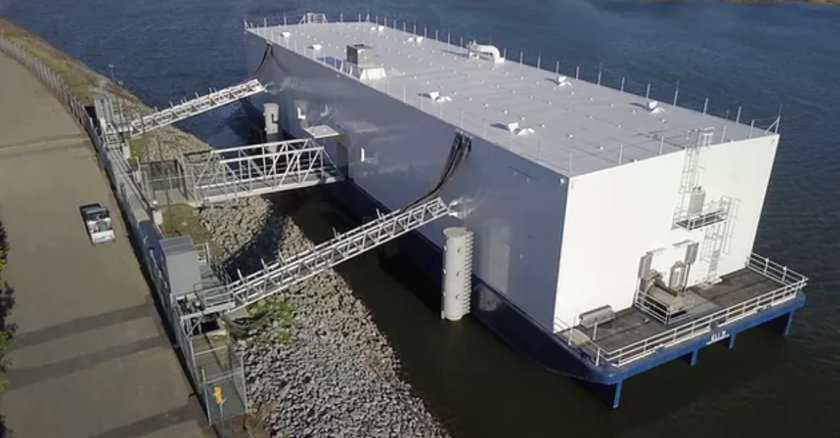The facility, known as Stockton 1 Data Center, has been up and running for more than three years, hosting a variety of public- and private-sector tenants that use the technology for data backup and disaster recovery.

“When I looked it up, then we’re like, ‘Oh, this is not an old Google hand-me-down,’” Niazi told Industry Insider — California.
Previous tech leaders from Stockton and the region had toured the barge, “but there was no request, no project or anything,” Niazi said. “My idea here was we needed a data center colocation. That’s when I heard about different options and all that, and I liked this one. So I wanted to see this, not just to go on a field trip.”
“We had the tour — it’s state-of-the-art, and it’s getting populated really quick. It’s an excellent data center, and it has resiliency. And it’s local, close. It’s very cool. I think the proximity of it is great. I really enjoyed the security, the liquid cooling, and the other features there for the environment. What’s really great is it has a separate PG&E grid, so they’re basically isolated from any outages.”
For those into specs, Nautilus has a brief video offering a look inside the data center, which offers:
- 80 percent more energy efficiency than a land-based data center.
- Operating costs that are 30 percent lower than traditional land-based data centers.
- Air emissions are 30 percent less than a land-based center.
- 7 megawatts of scalable critical IT load with four vaults in the vessel: three 2MW vaults and one 1MW vault available as a powered staging and test center.
- All vaults offer high-density capacity and can support customers from a rack to a full vault deployment.
- The system is under vacuum, so it poses no threat of leaks or water touching an IT load.
“It’s really impressive, really clean, well-organized,” Niazi said after touring the barge. “All the cables, everything is really laid out there. You could get your own Internet feed in there, no problem. I’ll get a circuit there, like Comcast, and then I would get the private connection to our Microsoft cloud from there, and then replicate some of the data in case of a disaster.”
The city has a primary data center in Stockton’s SCB building, where the police headquarters is. When needed, they’ll go to the barge to work there. “We have a network support infrastructure data center group here under me” that takes care of that, he said.
Niazi said he was able to secure $200,000 in federal funding through the American Rescue Plan Act, which will pay for some of the Cisco infrastructure that the city will use. Then he negotiated the lease for the space on the barge.
“For the city of Stockton, I told them to give us a really good rate and all that — and they gave us a good rate — and then I got that approved. The plan is that by about July 1, we’ll sign the lease, sort it out in July, get all my ducks in a row, and then get some Cisco networking equipment in there, and then some servers, and then start replicating some Tier 1 things to the cloud — you know, like a hybrid approach — and then populate it or put a backup device there.”
Once the switch is flipped, he’ll start with doing data backup for the Stockton Police Department, then the fire department, and then the city’s finance and human resources data. With all that potentially sensitive information, he’s confident about data security.
“It’s very secure to get into, with two layers of security,” he said. “You have security to get into the port, which is good, and then security also into Nautilus. For customer service, you have a separate building from the data center, so that really impressed me — that and the technology.”
Nautilus has several other very large tenants that use the floating data center for storage, backup and recovery. San Joaquin County is among the public-sector tenants that use it for disaster recovery and backup, and in December, Nautilus announced a contract with “a prominent artificial intelligence company.” That contract, the company said, is a testament to the data center’s ability to host high-density AI applications.
For Niazi, the benefits are closer to home: “Actually being in a port, you’re like in a different city or state,” he said. “But you’re five minutes away.”








